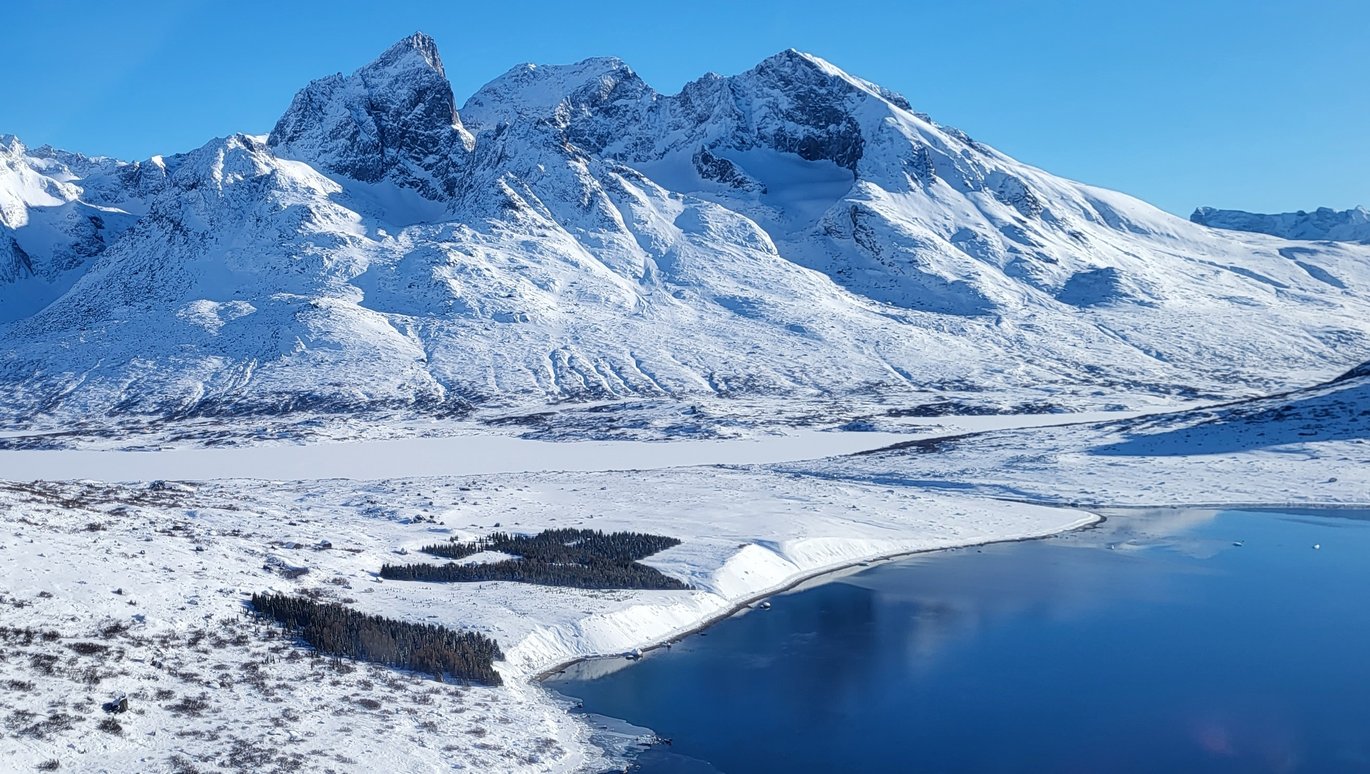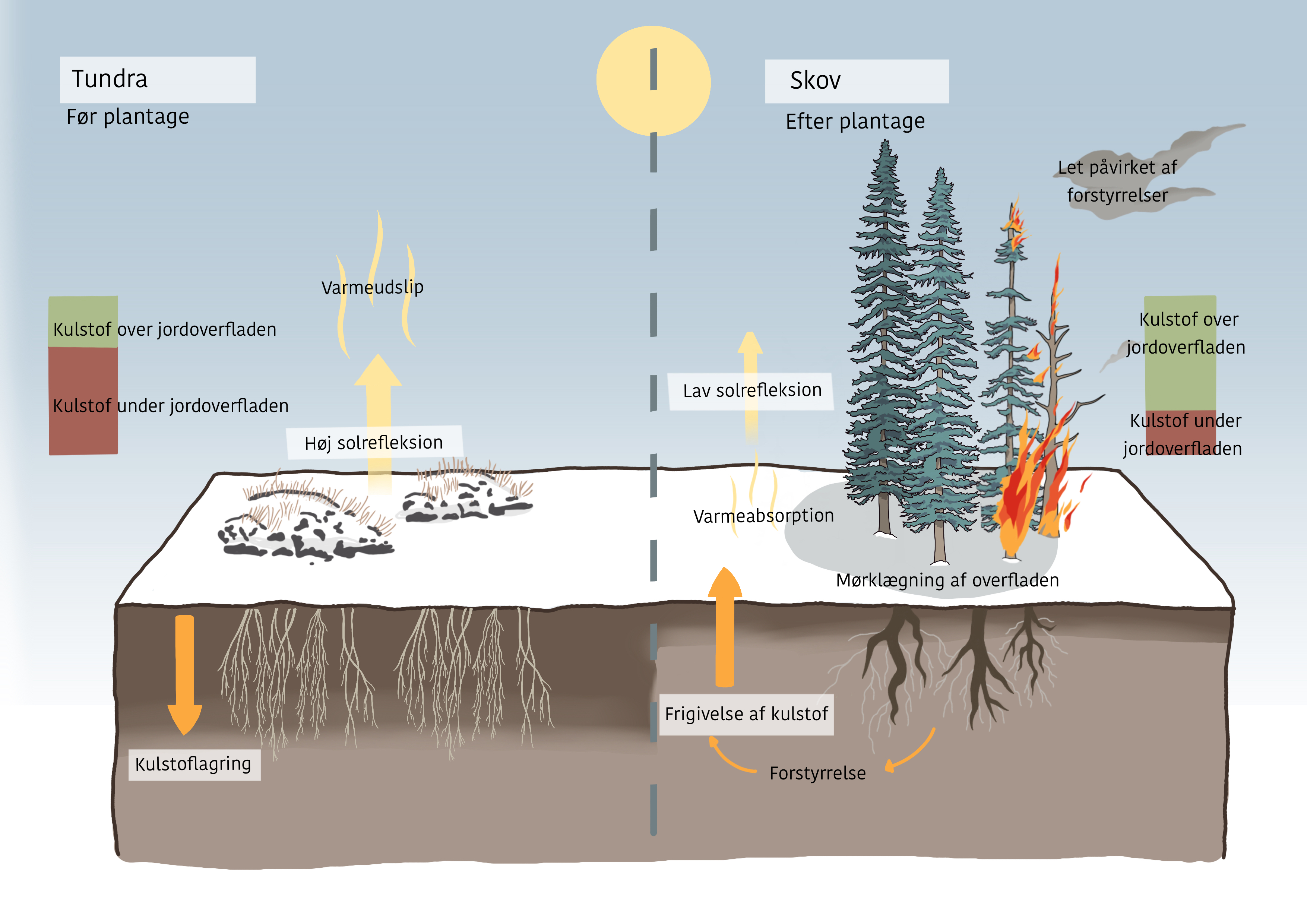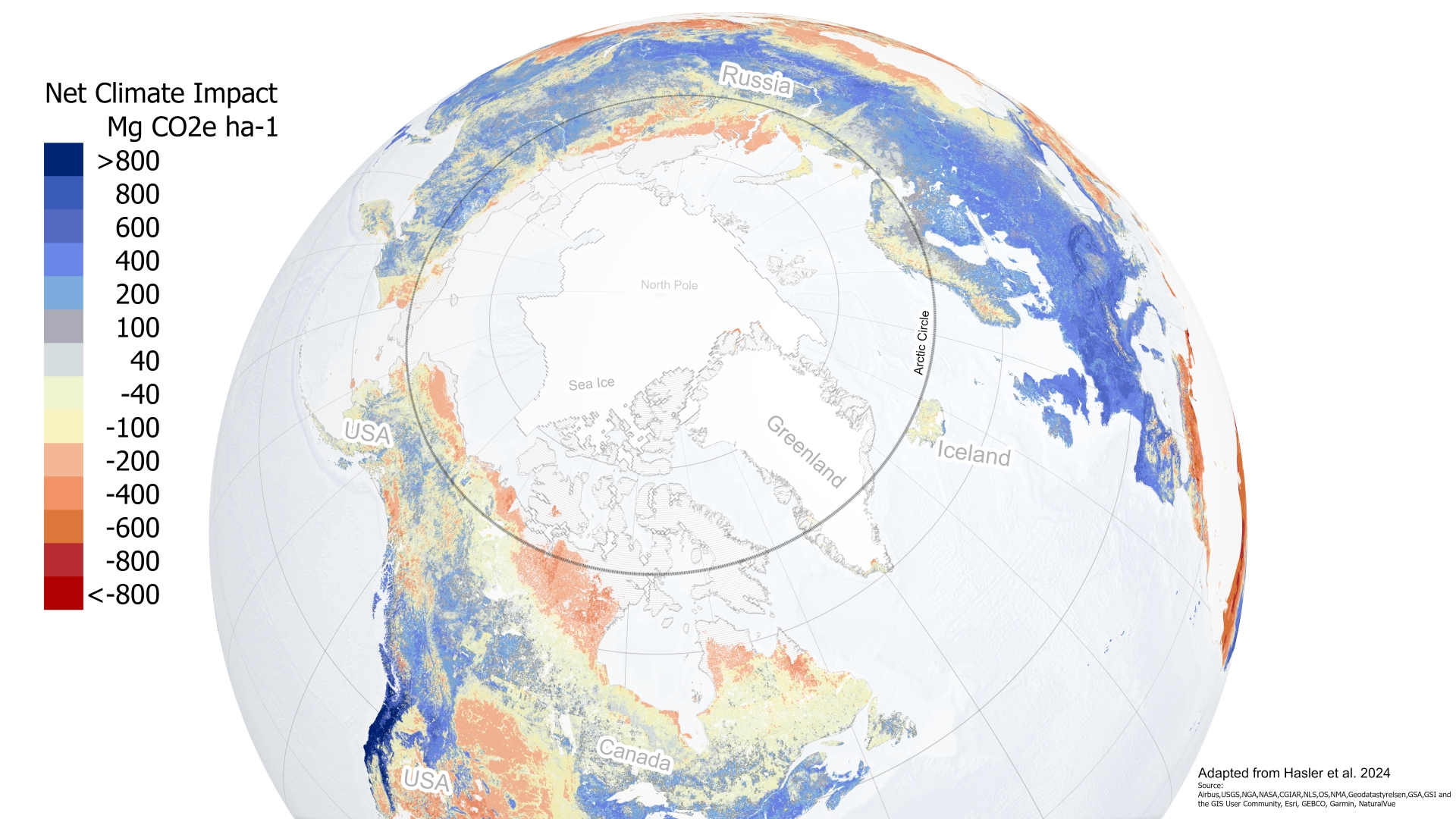Planting trees in the Arctic could make global warming worse, not better, say scientists
Trees can absorb large amounts of CO2 from the atmosphere, so if you plant more of them, you can counteract global warming. It just doesn't work in the northernmost latitudes – here tree planting will rather accelerate global warming, warns an international research group.


Plantation establishment disrupts the previously intact soil, leading to increased decomposition of microbial carbon (1), which is exacerbated by enhanced soil insulation caused by increased snow trapping and reduced snow packing (2). Growing trees exude carbon from their roots accelerating the turnover of soil carbon by root-associated microbes (3). As the plantation matures, trees darken the surface and diminish the proportion of energy reflected to the atmosphere (4). When a plantation is disturbed, the albedo increases while carbon stored in biomass decreases (5).
Drawing: Laura Barbero-Palacios, Greenland Institute of Natural Resources

Tree planting has been widely touted as a cost-effective way of reducing global warming, due to trees’ ability to store large quantities of carbon from the atmosphere.
But, writing in the journal Nature Geoscience, an international group of scientists argue that tree planting at high latitudes will accelerate, rather than decelerate, global warming.
As the climate continues to warm, trees can be planted further and further north, and large-scale tree-planting projects in the Arctic have been championed by governments and corporations as a way to mitigate the worst effects of climate change.
However, when trees are planted in the wrong places - such as normally treeless tundra and mires, as well as large areas of the boreal forest with relatively open tree canopies - they can make global warming worse. (See fact box)
Facts:
Boreal forests, also known as taiga, are characterized by extensive forest areas dominated by conifers such as spruce, pine and larch. Boreal forests cover large areas in Canada, Alaska, Russia, Scandinavia and parts of Japan. They make up approximately 29% of the Earth's total forest cover.
According to lead author Assistant Professor Jeppe Kristensen from Aarhus University, the unique characteristics of Arctic and sub-Arctic ecosystems make them poorly suited for tree planting for climate mitigation.
Risky place to be a tree
“Soils in the Arctic store more carbon than all vegetation on Earth. These soils are vulnerable to disturbances, such as cultivation for forestry or agriculture, but also the penetration of tree roots. The semi-continuous daylight during the spring and early summer, when snow is still on the ground, also makes the energy balance in this region extremely sensitive to surface darkening, since green and brown trees will soak up more heat from the sun than white snow," said Jeppe Kristensen.
In addition, the regions surrounding the North Pole in North America, Asia and Scandinavia are prone to natural disturbances - such as wildfires and droughts - that kill off vegetation. Climate change makes these disturbances both more frequent and more severe.
“This is a risky place to be a tree, particularly as part of a homogeneous plantation that is more vulnerable to such disturbances,” said Kristensen. “The carbon stored in these trees risks fuelling disturbances and getting released back to the atmosphere within a few decades.”
The researchers say that tree planting at high latitudes is a prime example of a climate solution with a desired effect in one context but the opposite effect in another.
Focus on Earths energy balance
“The climate debate is very carbon-focused, because the main way humans have modified the Earth’s climate in the last century is through emitting greenhouse gases from burning fossil fuels. But at the core, climate change is the result of how much solar energy entering the atmosphere stays, and how much leaves again – Earth’s so-called energy balance,” said Jeppe Kristensen.
Greenhouse gases are one important determinant of how much heat can escape our planet’s atmosphere. However, the researchers say that at high latitudes, how much sunlight is reflected back into space, without being converted into heat (known as the albedo effect), is more important than carbon storage for the total energy balance.
The researchers are calling for a more holistic view of ecosystems to identify truly meaningful nature-based solutions that do not compromise the overall goal: slowing down climate change.
“A holistic approach is not just a richer way of looking at the climate effects of nature-based solutions, but it’s imperative if we’re going to make a difference in the real world,” said senior author Professor Marc Macias-Fauria, from the University of Cambridge’s Scott Polar Research Institute.
However, the researchers recognise that there can be other reasons for planting trees, such as timber self-sufficiency, but these cases do not come with bonuses for climate mitigation.
“Forestry in the far North should be viewed like any other production system and compensate for its negative impact on the climate and biodiversity. You can’t have your cake and eat it, and you can’t deceive the Earth. By selling northern afforestation as a climate solution, we’re only fooling ourselves," said Marc Macias-Fauria. “
Large herbivores in stead of trees
So how can we moderate global warming at high latitudes? The researchers suggest that working with local communities to support sustainable populations of large herbivores, such as caribou, could be a more viable nature-based solution to climate change in Arctic and subarctic regions than planting millions of trees.
According to Marc Macias-Fauria, there is ample evidence that large herbivores affect plant communities and snow conditions in ways that result in net cooling. This happens both directly, by keeping tundra landscapes open, and indirectly, through the effects of herbivore winter foraging, where they modify the snow and decrease its insulation capacity, reducing soil temperatures and permafrost thaw.
The researchers say it’s vital to consider biodiversity and the livelihoods of local communities in the pursuit of nature-based climate solutions.
“Large herbivores can reduce climate-driven biodiversity loss in Arctic ecosystems and remain a fundamental food resource for local communities. Biodiversity and local communities are not an added benefit to nature-based solutions: they are fundamental. Any nature-based solutions must be led by the communities who live at the frontline of climate change,” said Macias-Fauria.
Additional information | |
| We strive to ensure that all our articles live up to the Danish universities' principles for good research communication (scroll down to find the English version on the web-site). Because of this the article will be supplemented with the following information: | |
| Funding | Carlsberg Foundation, Novo Nordisk Fonden, Natural Environment Research Council, NordForsk, Horizon 2020 Framework Programme |
| Read more | The article "Tree planting is no climate solution at northern high latitudes" in Nature Geoscience |
| Contact | Jeppe Aagaard Kristensen Marc Macias-Fauria |
